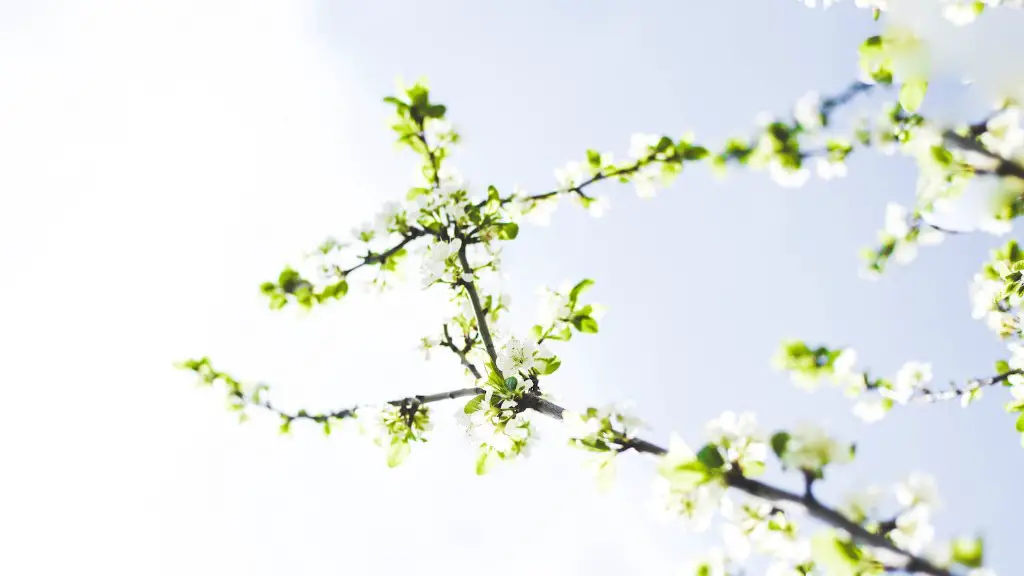Harvesting palm tree seeds has never been easier thanks to modern technology and research. The palm tree is one of the oldest plants on earth – and their seeds, one of the most resilient and valuable. They have the potential to provide food security and nutrition to millions of people, as well as help in many aspects of the environment such as reforestation and biodiversity preservation. Palm tree seeds have certain properties that make them suitable for sustainable production. This article will explain what makes harvesting palm tree seeds unique and provide an overview on how you can harvest them.
Harvesting palm tree seeds requires an understanding of their specific germination requirements. Generally, palms will produce a lot of flowers which only a fraction of produce usable seed. Once the flowers are pollinated, the seed initially forms within the fruit, but the optimum time to harvest it is when it is fully mature but still on the plant. If the seed is left until it has fully ripened, it can germinate and the crop will be lost. The seeds must be removed from the fruit, cleaned, and dried to be suitable for germinating. Different palm species may have different germination requirements, so it is important to research for the particular species you plan to work with.
The first step in harvesting palm tree seeds is to identify which ones are ready to be harvested. The seeds should be a solid gray color and should come off the tree easily with gentle pressure. It is also important to look for any signs of disease or disease-causing organisms, such as fungi, on the seed or the tree itself. If any are present, then the seed should be discarded. Once the seeds have been identified, they should be removed from the tree and placed in a cool, dry area until ready for processing.
The second step in harvesting palm tree seeds is to clean the seeds. This is done by washing them in clean water and removing any pulp and other debris. The seeds can then be washed in mild soap and water, then patted dry. The seeds should be allowed to dry completely in a well-ventilated area, away from direct sunlight. After drying, the seeds should be sorted and stored in an air-tight container until ready for germination.
Finally, the third step in harvesting palm tree seeds is to process them. The seeds should be soaked in warm water for around 24 hours to activate the germination process. After soaking, the seeds should be drained, dried, and stored in an air-tight container. When stored properly, the seeds should remain viable for up to three years.
Germination Techniques
The next step in the process of harvesting palm tree seeds is to germinate them. Germination is the process by which the seeds develop into a new plant. Palm seeds can be germinated in two ways; either by seeding them directly into the ground or by starting in a container and then transferring to the ground. Direct seeding into the ground requires more care but has a higher success rate. Alternatively, containers can be used as the starting point for the process, allowing for easier seedling transfers.
When using containers, the seeds should be placed in a humidity-controlled environment, such as a damp cloth-lined box or a container with a piece of moist paper inside. The container should be placed in an area with filtered sunlight and an evenly drained soil. The temperature should remain between 80 and 90 degrees Fahrenheit for best germination results. The seeds should be monitored for signs of germination, including the formation of root systems, or leaf development.
Once the seeds have germinated, they should be transplanted into larger containers or directly into the ground. The soil should be well-draining and amended with compost to encourage healthy plant development. When transplanting, it is important to ensure that the roots do not become too compacted and the soil should be kept relatively moist. The seedlings should be monitored to ensure they are developing properly and should be given a light fertilizer when necessary.
Harvest Yields and Storage
The success of harvesting palm tree seeds relies on a variety of factors, including the quality of the seed, the environment, and the care taken during the entire process. Depending on the species, the harvesting process can potentially yield a large number of palm tree seeds. Proper harvesting also helps to ensure high-quality seeds with good germination potential, as well as long-term storage stability. When using the proper techniques, harvesting palm tree seeds can be a very rewarding experience.
Once the palm tree seeds have been harvested and germinated, the yield can be expected to be considerably high. A single seed can potentially produce several plants, making the process of harvesting palm tree seeds a more economical option. Once the seedlings have been established, they can then be cared for as they would in their natural environment. The seedlings should be watered regularly, fertilized, and monitored for signs of disease or stress.
Harvested palm tree seeds should be stored in a cool and dry place in air-tight containers. Proper storage is essential to the longevity of the seeds, making them viable for up to three years. If the seeds are kept in their ideal environment, they can last even longer. Proper storage of palm tree seeds also helps to ensure they remain of the highest quality.
Common Mistakes
When harvesting palm tree seeds, there are a few mistakes that can occur. The most common mistakes include not properly identifying which seeds are ready for harvest, harvesting too late, not drying the seeds correctly before storage, and not taking the necessary precautions when storing the seeds. Additionally, some palm trees require special care when it comes to harvesting, such as not collecting immature seeds, as these seeds may not germinate at all. Therefore, it is important to research the species you plan to harvest before you begin.
Another mistake people make is not allowing the seeds to soak properly when germination is necessary. If the seeds are submerged for too long, their rate of germination can decrease significantly. Furthermore, too high or too low temperatures during germination can also cause the process to be unsuccessful.
Finally, when storing the seeds, it is important to remember that oxygen and moisture are enemies to the viability of palm tree seeds. Therefore, it is important to store the seeds in air-tight containers away from sources of moisture. Keeping the seeds in a place that is cool and dry will help to ensure the best possible viability.
Planting and Care
Once the palm tree seeds have been processed and stored, they are now ready to be planted. Depending on the species, the seeds should be planted around 6 to 8 inches deep and 8 to 10 inches apart. Depending on the climate, they should be planted during the growing season and should be watered regularly until they are established. Different species of palms may also require different fertilizers and care, so it is important to research the specific species you plan to work with.
When planting and caring for the seedlings, it is important to provide them with the necessary nutrients and water. When it comes to nutrition, palms need potassium, nitrogen, and phosphorus, as well as trace elements such as magnesium, sulfur, boron, and zinc. Applications of these elements should be done at least twice a year and should be monitored with regular soil tests. Furthermore, palms also need regular watering, as they are very sensitive to drought.
When caring for the palms, it is also important to inspect them for signs of disease or damage. Common diseases include root and crown rot, as well as leaf spot and other fungal diseases. If any of these diseases are found, then it is important to address them right away. Additionally, the palms should be pruned regularly to promote healthy growth and reduce the risk of disease and damage.
Harvesting Palm Tree Seeds: Summary
Harvesting palm tree seeds can be a rewarding experience when done properly. The process requires an understanding of the specific species, germination requirements, and proper harvesting and storage techniques. Germination and transplantation needs to be done carefully and with the right environment for successful results. Once the seedlings have been established, they can then be cared for with regular fertilization and watering. With the right knowledge and care, harvesting palm tree seeds can be a great way to have a sustainable crop of palm trees.



